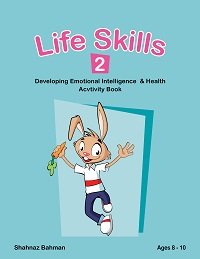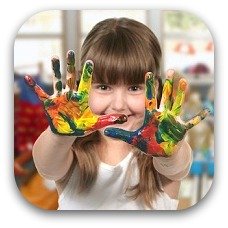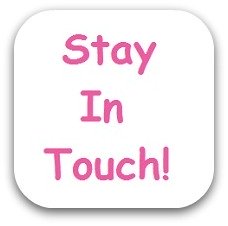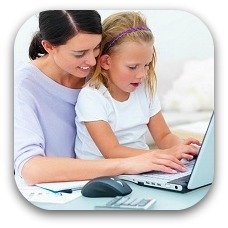Life Skills 2 - Units’ overview

Life skills 2- Helping children to be happy, smart and healthy
Life Skills books are designed to support children develop their emotional intelligence and health. Through the development of their emotional intelligence, children will have a better self awareness, better self understanding and self management , improved self esteem, better understanding of others and better relationships with others. This will ultimately lead them to be happier children. Obviously when children feel happier, they can be smarter as learning can take place more easily when one enjoys a relaxed and calm brain.
Life Skills 2 book consist of 6 unites. The first two units focus on developing children’s self awareness and self management. Unit three and four aim at developing their social awareness and relationship with others both in family and with friends. The last two units focus on developing health related habits. That is, keeping healthy and good touches and bad touches.
Each unit consists of a number of activities with clearly stated learning objectives. These activities are designed to help the children to reflect, make their own decisions, learn new skills and practice using them. Children with no reading difficulties can do these activities quite independently.
These activities include drawing, colouring, making things, designing, role play, problem solving, cooking, hosting class party, and many others. All these activities enhance children’s thinking skills and boost their creativity.
These days parents are very busy and some of us have hardly any time to get to know our children closely, understanding their emotions, needs, struggles or problems. In fact, sometimes we fail to see the positive aspects of their personality if they are not doing well at school. Thus, we created a Home school link activity which can bring parents and children together to do certain activities. These are not all pencil paper activities. In many situations, they are real life activities.
At the end of each unit, we have My project. Here we bring together the learning experiences in the unit and invite the children to show their understanding through doing a project. Most of these projects are real life projects and some of them encourage group activities and team work. The children are also invited to reflect on their work individually and collectively using the assessment tools introduced in the assessment booklet.
We believe that reflection is a very powerful tool for helping children to improve their thinking habits and daily beahviour. Therefore, each unit ends with a reflection activity “Here’s what I think”. Here, children are invited to reflect on their perceptions or habits related to this specific unit and make their own decisions for further improvement.
All through Life Skills activities we have our dear friend Angelo who plays the role of a friendly rabbit who is there for the children to entertain them, boost their self confidence and just be there for them. We sometimes use Angelo to pass important messages we want to pass indirectly to children.
Here is an overview of each unit:
Unit 1- More about me
This unit aims at developing children’s overall self-awareness and self management through identifying their goal for the year, their good and bad habits, and their hygiene habits in terms of keeping clean and tidy. All these are achieved through interesting activities and exercises.
The home school link activity provides a unique opportunity for parents and the child to talk about what makes the child feel good about himself. Together they are invited to design a box, decorate it and write on it “ I like myself”. Every day the child must make sure he makes one or two things that make him feel good about himself, then write about it on a colored piece of paper and put it in the box. After a week the teacher will ask all the children to take their box to class and share what they put in the box with the rest of the children in class. This is a unique opportunity to help children do things that make them feel good about themselves, It’s an excellent activity to boost their self esteem and self confidence.
The children are given another opportunity to practice keeping clean and tidy through My Project, where they are invited to make door knobs, one to be used when their room is tidy allowing others to come to their room and the other one is to indicate that their room is messy and that they need to clean it. This is a fun activity that children truly enjoy.
To see where the children are with in terms of their self awareness and self management, at the end of the unit, we have Here’s what I think page which is basically a self assessment activity to help the children reflect and make their own decisions.
Here the children are encouraged to think if they have clear goals, if they are serious about working on their goals, if they really want to get red off any bad habits they have and how keen they are on keeping clean and tidy.
This is a very important page for both parents and teachers if they sincerely want to help the child develop even more. It helps to see children’s next steps and come to a realization of what need to be done to help the child develop further more.
This is a very important page for both parents and teachers if they sincerely want to help the child better manage their emotions. It helps to see children’s next steps and come to a realization of what need to be done to help the child be happier and be more peaceful.
Unit 3- My Family
This unit aims at developing children’s social awareness within family context. It teaches them to appreciate their family members, take responsibility and give a helping hand. It also teaches them that conflict can be part of family life and through this unit children learn how to resolve conflict between family members. In this unit we also focus on teaching an important value i.e. telling the truth.
The home school link activity provides a unique opportunity for parents and the child to connect and talk about family events through designing a family album and talking about a special family member in front of their class mates.
The children are also given the opportunity to express their feelings and show appreciation to a family member through My Project, where the child is invited to make a special card for a family member expressing their feelings and showing appreciation.
To see where the children are with in terms of their social awareness and relationship management in family, at the end of the unit, we have Here’s what I think page which is basically a self assessment activity to help the children reflect and make their own decisions.
Here the children are encouraged to reflect on how they feel in their family, if they trust anyone in their family, their readiness to take responsibility, their conflict resolution skills, and their readiness to tell the truth in difficult situations.
This is a very important page for both parents and teachers if they sincerely want to help the child better mange his relationship with his family members. It helps to see children’s next steps and come to a realization of what need to be done to help the child be happier and enjoy his family life.
Unit 4- My Friends
This unit aims at developing children’s social awareness within friends’ context. It examines their ability of having good relationship with their friends and if they are bullying others or getting bullied. They learn to identify different kinds of bullying, talk about any bullying experience they had or witnessed, learn how to avoid bullying situation or being bullied and know what to do if they get bullied. They also learn how to get along with friends and show appreciation to their friends through games and different activities.
The home school link activity provides a unique opportunity for the child to talk to their parents about their friends and the kind of relationship they have. In this activity the children are invited to design a picture frame and stick their friends’ pictures in it.
The children are also given the opportunity to support their school in raising anti bullying awareness through My project, designing anti bullying posters and displaying them in different parts of the school.
To see where the children are with their social skills within friends’ context, at the end of the unit, we have Here’s what I think page which is basically a self assessment activity to help the children reflect and make their own decisions.
Here, the children are encouraged to reflect on their relationship with their friends, see if they are happy or perhaps getting bullied, their ability of getting along with friends, their ability of managing themselves if they get bullied and if they need any kind of support.
This is a very important page for both parents and teachers if they sincerely want to help the child develop even more. It helps to see children’s areas of strength and those that they need support with. It can draw their next step and come to a realization of what need to be done to help the child feel happier and safer with his friends.
Unit 5- Keeping healthy
This unit aims at developing children’s awareness of how to keep healthy. It teaches them the importance of keeping healthy, the value of exercising, how to keep clean, and how to look after different parts of the body. It also focuses on the importance of getting enough sleep. All this is achieved through interesting exercises and activities.
The home school link activity provides a unique opportunity for the child and the parents to work together on encouraging the child to practice the good habits of keeping healthy and keeping it consistent.
The children are also given another opportunity to think of keeping healthy, clean and have fun through My Project, making their own soap. This is an activity that children very much enjoy.
To see where the children are with their awareness and practices of keeping healthy, at the end of the unit, we have Here’s what I think page which is basically a self assessment activity to help the children reflect and make their own decisions.
Here the children are encouraged to reflect on their daily practices and see if they are seriously looking after their body, doing regular exercise and getting enough sleep.
This is a very important page for both parents and teachers if they sincerely want to help the child develop even more. It helps to see children’s areas of strength and those that they need support with. It can draw their next step and come to a realization of what need to be done to support the children maintain a healthier life style.
Unit 6- Personal safety
This unit aims at developing children’s personal awareness and protecting them against sexual harassment. It focuses on teaching them good touches and bad touches. We help them to identify the private parts of the body. We introduce them to different examples of good and bad touches. We also teach them to say NO to a bad touch and what to do if somebody tries to give them a bad touch. All this is achieved through different activities and exercises.
The home school link activity provides a unique opportunity for parents and the child to work together and cover the private parts of Angleo and Angelica . This exercise opens the channel of communication between them and we hope that it can pave the way for a conversation or discussion around this topic as many parents don’t always find it easy to do so.
The children are also given the opportunity to have fun while thinking of good and bad touches through My project, as they are invited with their class mates to make a collage of good touches.
To see where the children are with their awareness of protecting themselves against sexual harassment, at the end of the unit, we have Here’s what I think page which is basically a self assessment activity to help the children reflect and make their own decisions.
Here the children are encouraged to reflect on their personal safety, see if they can distinguish a good touch from a bad touch, can say No to a bad touch and know what to do if somebody gives them a bad touch.
This is a very important page for both parents and teachers if they sincerely want to help the child feel safe or protect them against sexual harassment. It can draw their next step and come to a realization of what need to be done to help the child feel safe and secure.
More Info
|
|



